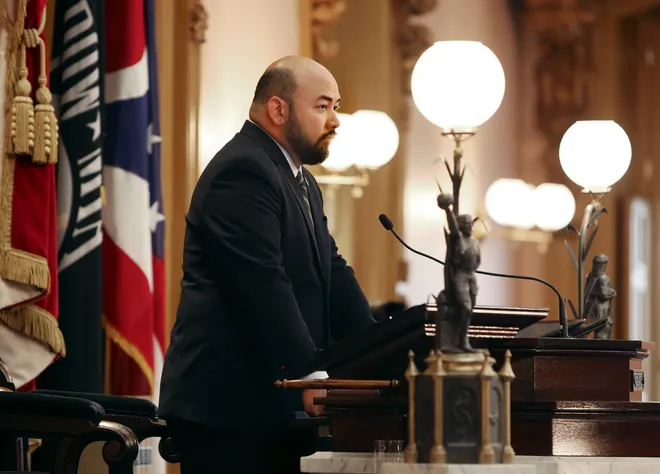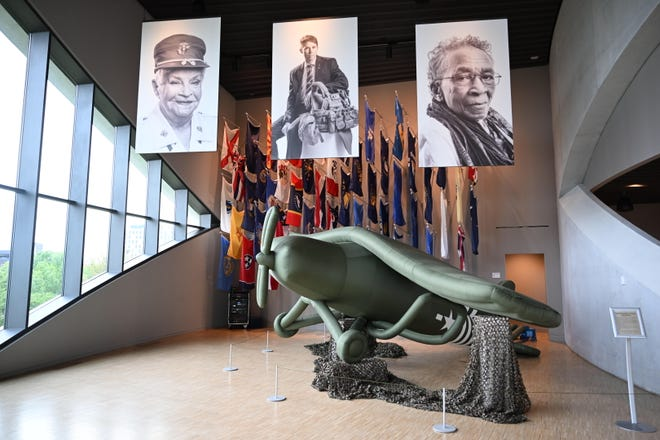Years earlier, a teenage Nancy Wilson was already such a talented singer that she hosted a local TV show while still a student at West High School.
Dwight Yoakum got his start performing at Northland High School. As a student at Eastmoor High, Michael Feinstein played piano in productions for the Jewish Community Center of Greater Columbus.
Columbus local stars could fill quite a bill. The Dispatch has put together some of the best performances — concerts, studio recordings, music videos, movies and TV appearances — from some of the best homegrown talent.
Nancy Wilson, ‘Face It Girl, It’s Over’
“She has a pretty voice and good stage presence,” Dispatch writer Johnny Jones wrote about 14-year-old Wilson and her performance in a 1952 West High School talent show. Before she graduated, Wilson was hosting a twice-weekly television show, “Skyline Melodies,” on the station that is now WSYX-TV.
Wilson moved to New York and released her first album, “Like in Love,” in 1960. She recorded 70 albums, won three Grammys and was revered as a civil rights hero during her life and career. She recorded “Face It Girl, It’s Over” in 1968 and performed the song on “The Ed Sullivan Show” that November.
Wilson died in 2018 at age 81.
Beverly D’Angelo, ‘Good Morning, Starshine’
Her bath-towel-clad performance of “Hey, Big Spender” as Chevy Chase wielded a camcorder the size of a small car has about 600,000 more YouTube views, but it’s not Beverly D’Angelo’s best on-screen singing performance.
It’s not even her best song in 1985’s “National Lampoon’s European Vacation.” (Check her out hitting Minnie Riperton’s high notes in a “Loving You” duet with Wayne Newton.)
Get the Evening Update newsletter in your inbox.
Stay up-to-date with the latest news from around Columbus
Delivery: DailyYour Email
The Upper Arlington native starred in the 1979 film version of “Hair,” for which she recorded “Good Morning Starshine.” She also sang Patsy Cline’s greatest hits in 1980’s “Coal Miner’s Daughter.”
Penny and the Quarters, ‘You and Me’
It was 1969 or 1970, according to Columbus’ now-defunct the Other Paper, when Penny, Preston, Johnny and Donald Coulter answered an ad for Harmonic Sounds Studios on the East Side. They sang backup for other artists until they were asked one afternoon by singer Jay Robinson to join him on a song he had written.
“You and Me” sat in a box of tapes for more than three decades until it was purchased in an estate sale. It ended up on a 2007 CD of long-forgotten music, caught the attention of actor Ryan Gosling and was included in his 2010 movie, “Blue Valentine.”
The song has been listened to more than 47 million times on Spotify.
Dwight Yoakam, ‘Guitars, Cadillacs’
As a 17-year-old in the early ’70s, he once told Columbus Monthly, Yoakam scraped together enough money to record a few songs — “experiments in terror,” he called them — at a studio near Sunbury and Agler roads. He grew up in Columbus, listening to country music on WMNI-AM, playing the drums and participating in drama at Northland High School.
“Guitars, Cadillacs” was the top song on his 1986 debut album. It peaked at No. 4 and earlier this year was ranked at No. 137 on Rolling Stone’s list of the 200 greatest country songs of all time.
Jermaine Stewart, ‘We Don’t Have to Take Our Clothes Off’
Jermaine Stewart spent a brief time in the spotlight, peaking at No. 5 on the Billboard charts in the summer of 1986 with this hit, “We Don’t Have to Take Our Clothes Off.” He had a long career doing backup work, though, as a dancer on “Soul Train,” for friends Jody Watley and Jeffrey Daniel in Shalamar, and as a background vocalist on the 1984 Culture Club hit, “Miss Me Blind.”
Stewart died of AIDS-related liver cancer at age 39 in 1997.
Rascal Flatts, ‘These Days’
Powell native Gary LeVox formed Rascal Flatts with his second cousin, Jay DeMarcus of Columbus and Joe Don Rooney. After being named the top new vocal group by the Academy of Country Music (ACM) in 2000, they won top group honors for seven straight years from either the academy or the Country Music Association (CMA).
The woman in the video for “These Days,” the 2002 hit that reached No. 1, is Allison Alderson, a former Miss Tennessee who was cast to play LeVox’s ex. She met DeMarcus during filming and the couple has been married since 2004.
Bow Wow, ‘That’s My Name’
Compared to Mozart, who composed his first pieces at age 5, Shad Moss got a late start in music. The Reynoldsburg native was discovered by Snoop Dogg at age 6 and released his first album, Lil’ Bow Wow, at age 13.
Now 37, retired and known as Bow Wow since 2002, Moss is a musician, actor, TV host, restaurateur and entrepreneur. “Bow Wow (That’s My Name)” was on his 2000 debut album, “Beware of Dog.”
The Evolution Control Committee, ‘Rebel Without a Pause (Whipped Cream Mix)’
Not everyone pays homage to the Evolution Control Committee, a 38-year-old Columbus band credited with creating the mashup. Their first was a 1993 mixes of Public Enemy raps with Herb Alpert instrumentals. As founder Mark Gunderson (also known as TradeMark G.) says, “The ECC has been making mashups since long before they were called mashups.”
Other hits include a mix of Dan Rather reporting on atrocities with the music of AC/DC, as well as the lyrics of Britney Spears’ “Oops!…I Did It Again” mixed with the music of Led Zeppelin’s “Stairway to Heaven.”
Michael Feinstein
Eastmoor High School graduate Feinstein got his start playing piano for the Columbus JCC Gallery Players. At age 20, he moved to Los Angeles and became an assistant to lyricist Ira Gershwin; he has been recording and performing since his 1986 debut album, “Pure Gershwin.”
In 2007, Feinstein founded the Great American Songbook Foundation to celebrate and preserve American music. He has been nominated for five Grammys in his career.
Teen Dream, ‘Let’s Get Busy’
In 1987, two years before En Vogue and three years before the formation of the group that would become Destiny’s Child, Columbus teens Lisa Jackson, Terri Whitlow and Nikki Desiree signed a record deal with Warner Brothers, got big airplay with their first music video and hit the road for a 25-city tour. “Let’s Get Busy” peaked at No. 44 on the Hot Black Singles chart.
Teen Dream was in the spotlight for just a year and disbanded by 1990.





































































